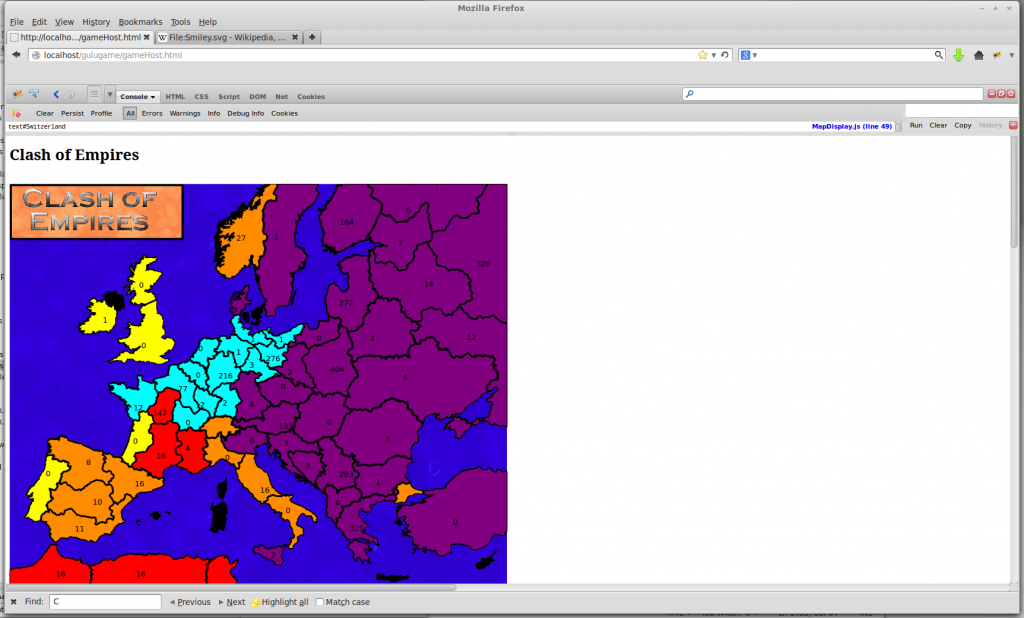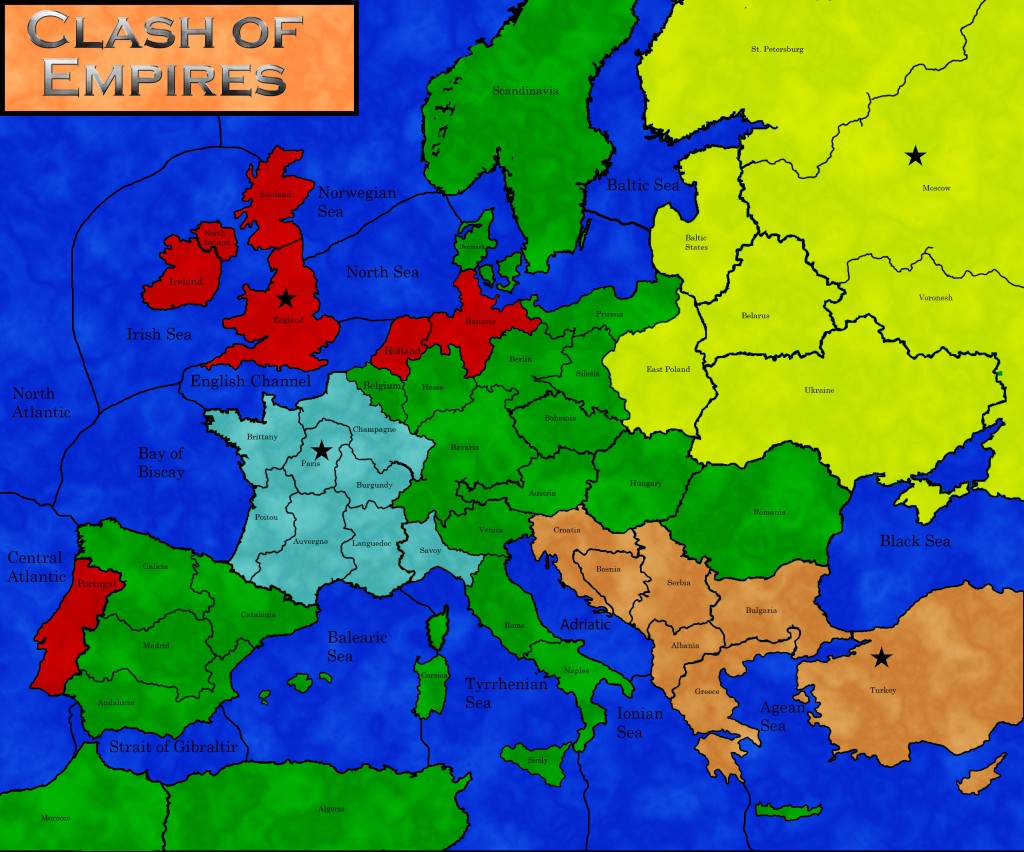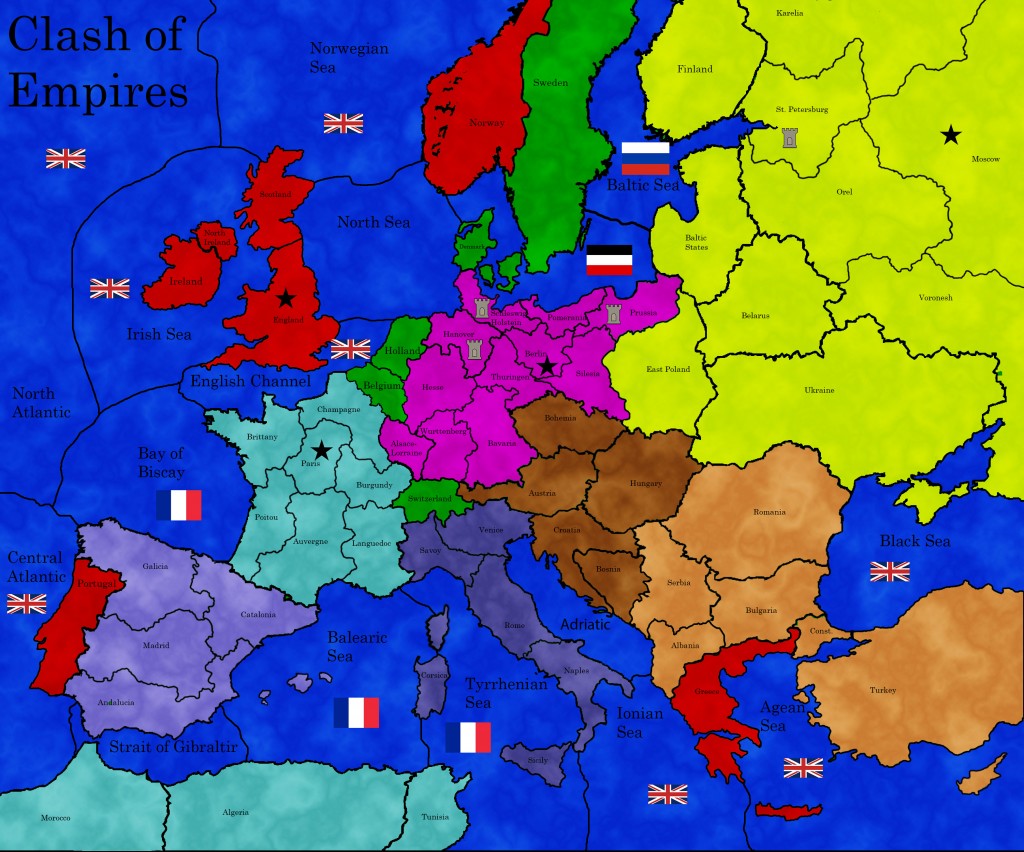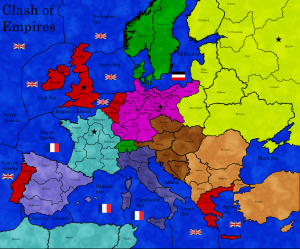I recently switched to using vector graphics in Clash of Empires to represent territories and troop counts. There were performance issues because I was previously using raster graphics, which required redrawing the game area too frequently. Also, there was confusion in the previous version over who owned a territory, and using vector graphics made it easy to change the territory color to represent a change in ownership.




